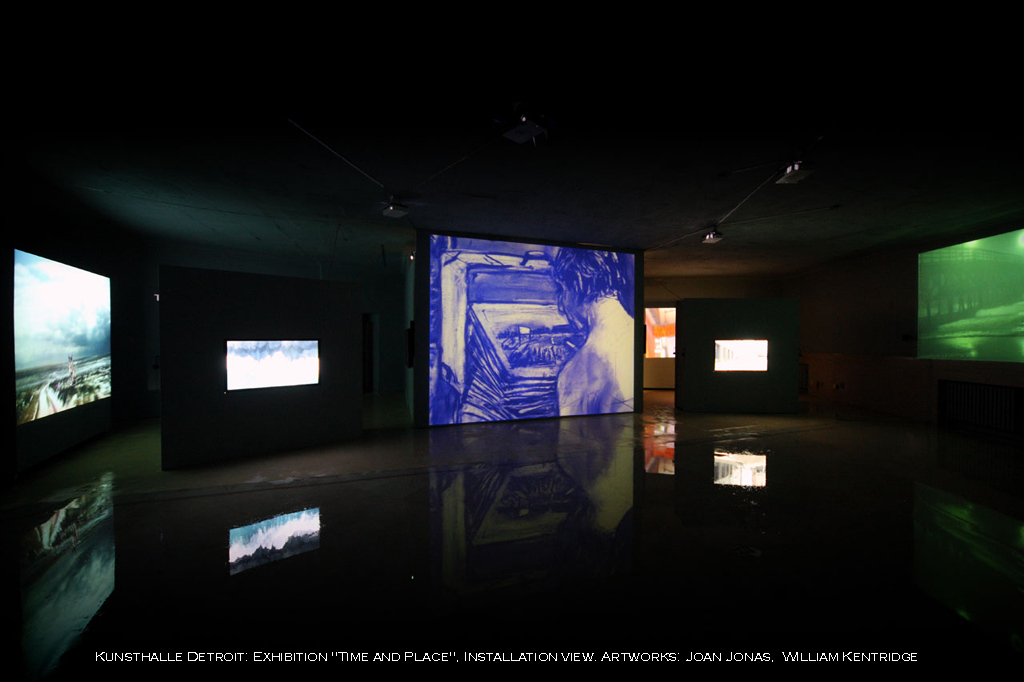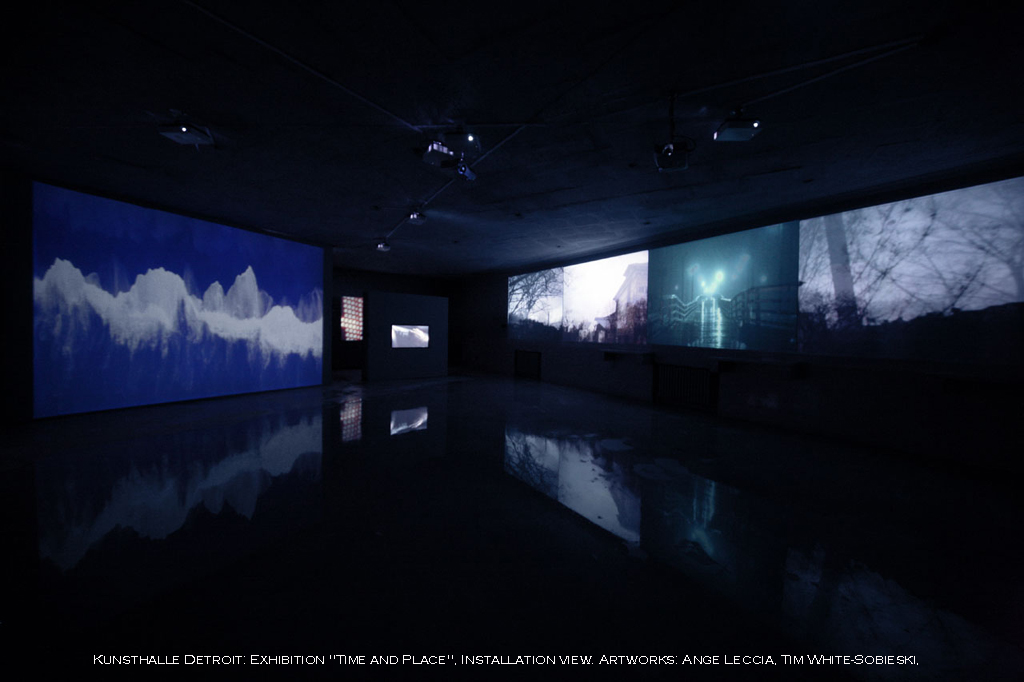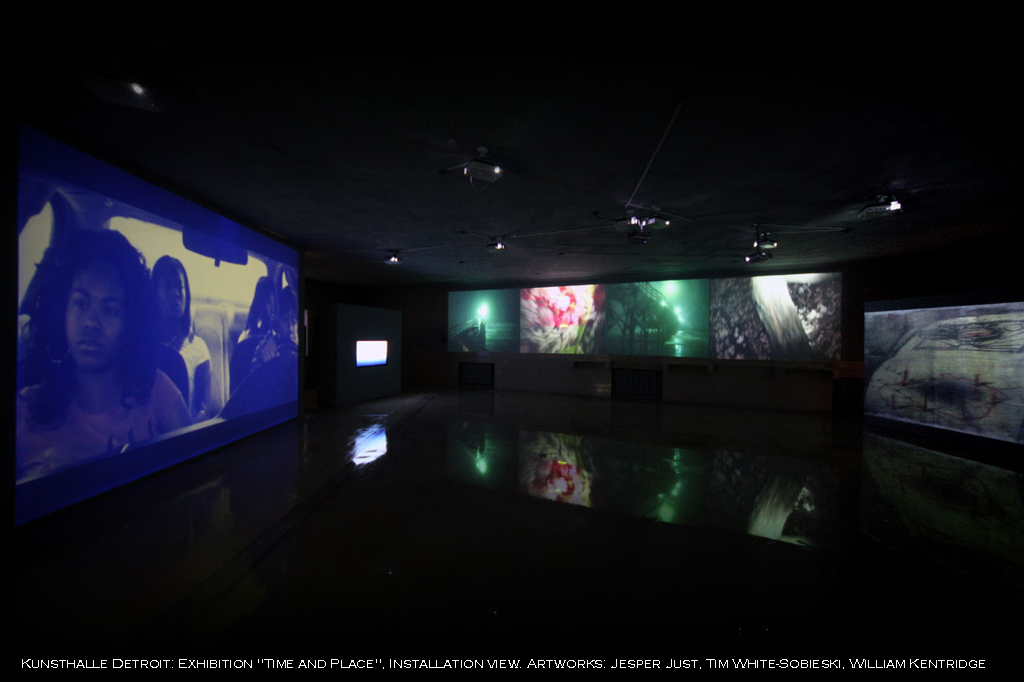
New museum brings international visions to Detroit
It still smells like fresh paint inside Kunsthalle Detroit, the city’s new art museum. (That feels really great to say, so I’m going to do it again: Have you heard? Detroit has a new art museum.) When our Kunsthalle (that’s German for “art hall” and denotes a non-collecting museum) opened two weeks ago, it came as something of a surprise to many, despite the fact that it’d been two years in the making. Word spread quickly: something about an ambitious, Russian-born New Yorker who’d opened the country’s first multimedia and light-based art museum in an old bank building in a dilapidated part of town. Reactions jumped from surprise and skepticism to unabashed giddiness when art enthusiasts saw the names of some of the heavyweights whose work is included in “Time and Place,” the inaugural show: William Kentridge, Ange Leccia, Bill Viola — apparently these people weren’t fooling around.
And indeed, the show is a knockout. It includes 12 moving image works by a diverse group of international artists. There aren’t any local artists represented, though two of the pieces were filmed in Detroit. And you’ll feel the undeniable presence of the city in several that weren’t; “Time and Place” is obviously a meticulously curated show, and several works were chosen because they speak, eloquently, to local concerns.
Take “Touch and Go,” a 2010 video work by Cristina Lucas. It was shot in Liverpool and prominently features something familiar to anyone who’s spent time in Detroit: a hulking, vacant industrial building. A cavalcade of aging, well-dressed passersby gleefully hurl rocks and bricks at the building in slow-motion, breaking its windows with gusto, high-fiving and clapping afterward. (Most of the performers, according to Kunsthalle director Tate Osten, were employed at the facility in its heyday.) The video regularly cuts to a perspective inside the building, where a slow, graceful and lonely ballet of flying broken glass is being performed. The piece is funny, cathartic and beautiful, giving voice to the physical emptiness and emotional frustration that follows the drawn-out process of de-industrialization. Sound familiar?
You might see Detroit in the transformational landscape of Kentridge’s “Felix in Exile” (1994), too, where past and present co-exist in the same fluid moments (as they do daily on our streets). The city’s also hiding in the unpopulated artificial environments of Hans Op de Beek’s elegant “Staging Silence” (2009), in which two disembodied hands carefully arrange and re-arrange miniature sets that come to feel, poignantly, like suddenly coherent memories of places you’ve long forgotten.
At the same time it relates to Detroit with immediacy and apparent commitment, Kunsthalle Detroit’s inaugural exhibition is ultimately reaching for something universal. You’ll experience a stunning variety of moving worlds inside the museum, worlds that speak to fundamental human concerns of time and place. Standing in the center of the illuminated space and taking it all in is a little overwhelming— but what a beautiful and welcome abundance our new neighbors have given us.
“Time and Place” is on view until September 10, 2011. A second reception takes place this Friday, June 24 from 6 to 9 p.m., and will feature two screenings of Viola’s landmark one-hour video work “The Passing” (1991) at 6:30 and 7:30. Kunsthalle Detroit describes “The Passing” as “an important and accessible … expression of spirituality [that] speaks eloquently to human experience at its most profound.” Suggested donation is $5. The museum is located at 5001 Grand River Ave; 313-897-7000; kunsthalle-detroit.org. Regular hours Thursday-Sunday, 2-7 pm.
Recent Content
-
Artsarticle ·
-
Artsarticle ·
-
Artsarticle ·


